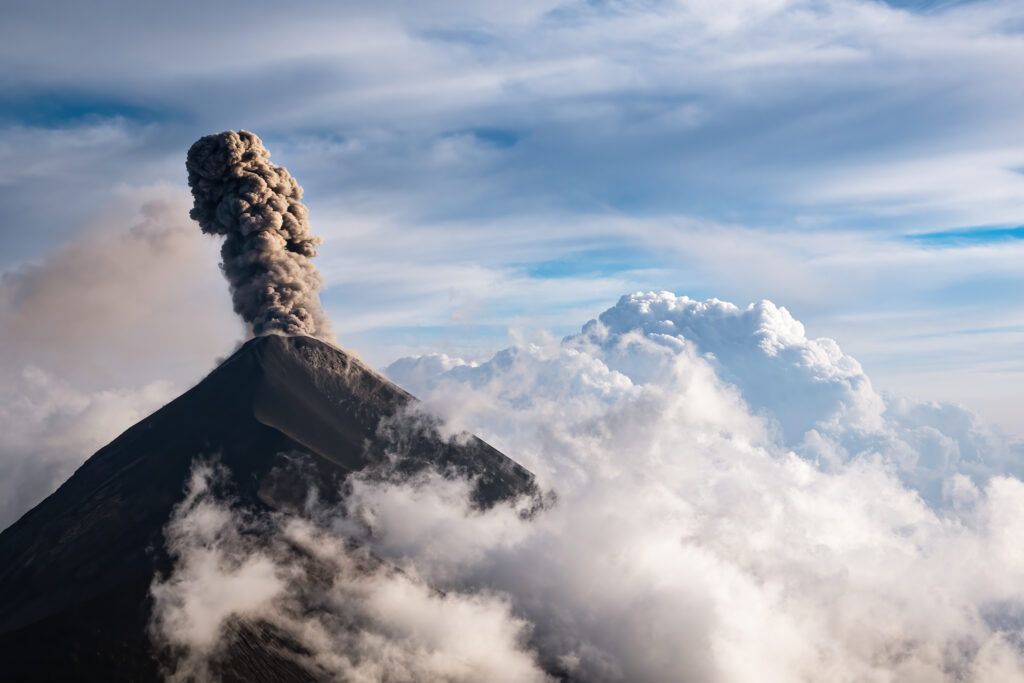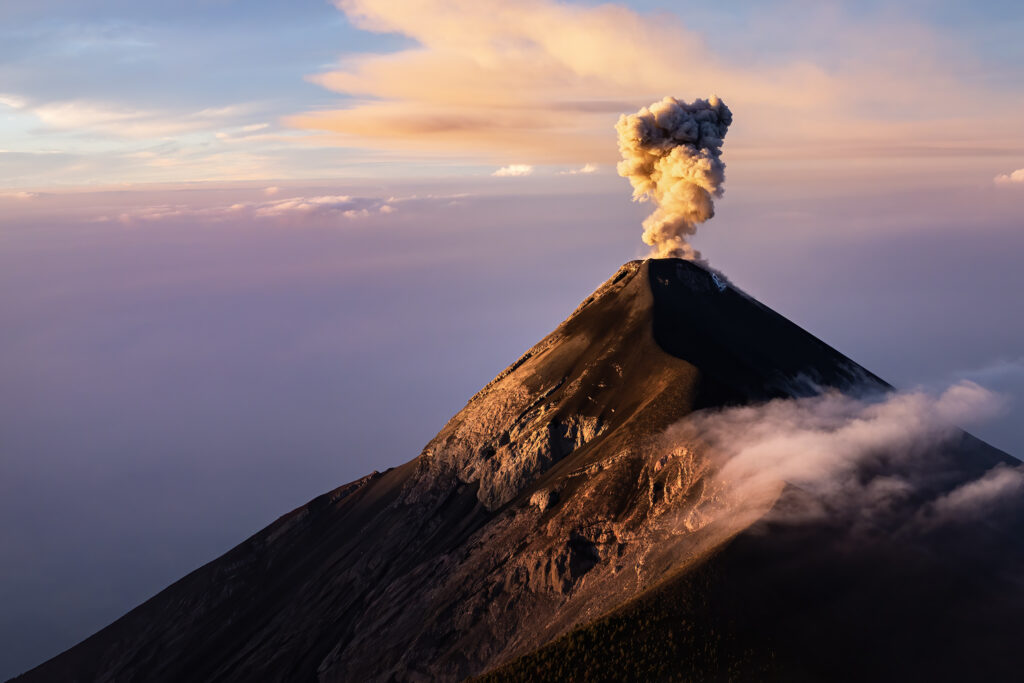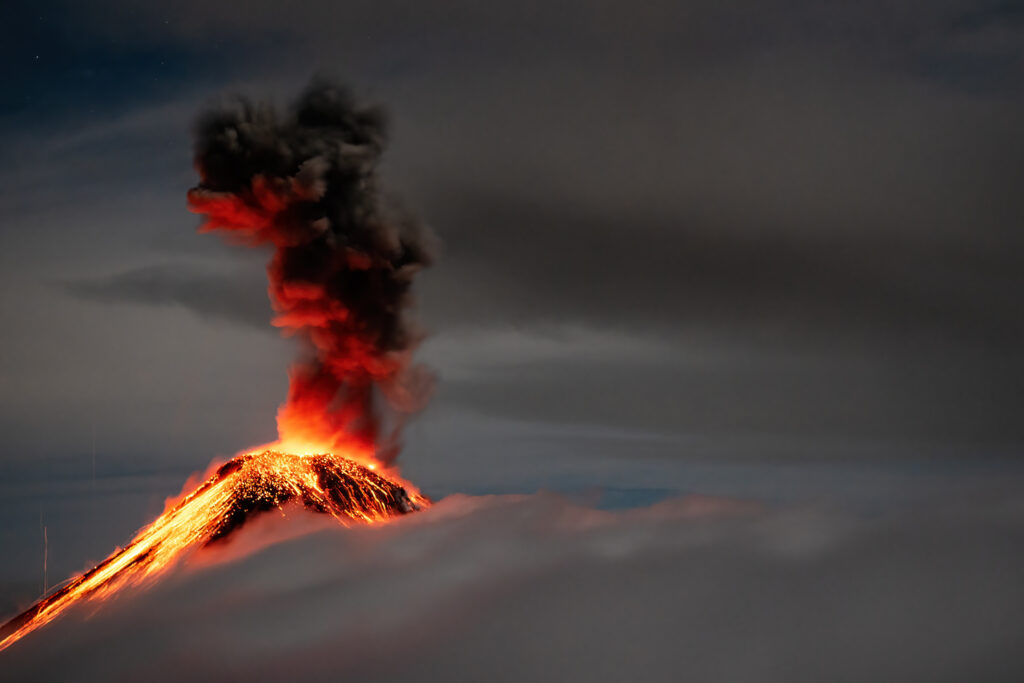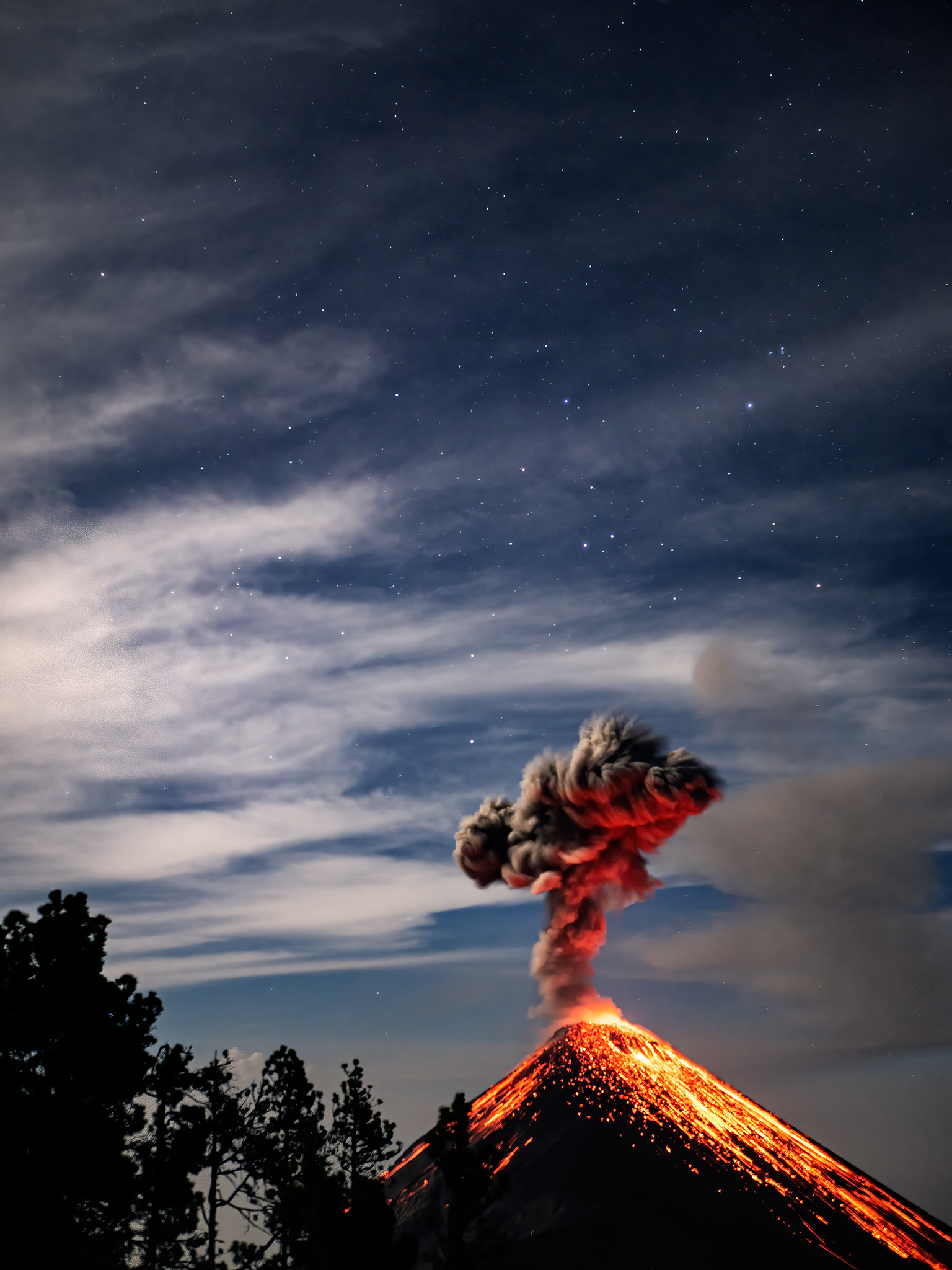FUEGOOOOOO 🔥🔥
Oh boy. Where to even begin with this one…
So recently, I had the chance to hike up Guatemala’s infamous Volcán de Fuego, and it was one of the single most incredible experiences of my life.
I’ve been enthralled by volcanoes since I was a little kid, and I’ve always dreamed of seeing an active one in real life (Australia is a little lacking in the exploding mountain department). So when I heard it was possible to climb up the side of one of the most active volcanoes on the planet and camp overnight on it, I absolutely jumped at the chance.
Fuego is one of a pair of twin volcanoes, and it’s actually the other volcano – Acatenango – that you climb up and camp on while Fuego puts on a show for the evening. We got incredibly lucky, with pretty much perfect weather, and a particularly active night for the volcano. Typically, Fuego goes off every twenty minutes or so on average, but it was exploding every five to ten minutes the night we were there.
The entire spectacle is a photographer’s dream, and long-exposures allow you to capture the dramatic lava flow amidst a backdrop of twinkling stars. However, Fuego certainly makes you work for the opportunity – with a gruelling all-day hike required in order to reach the viewpoint, and sub-zero temperatures once the sun goes down.
And yet, it was worth every second, and if you’d given me the chance, I would have gladly turned around and done it all again when I got back to the bottom.

This is undoubtedly my favourite photo from my evening spent on Fuego’s slopes. The thick, billowy cloud of volcanic ash is illuminated from below by the red hot lava, as fiery molten rock rains back down to Earth.
The whole scene is utterly apocalyptic, and yet captivatingly beautiful.
Witnessing Mother Nature blast huge volumes of magma into the air, hearing the shockwave a few moments later, and then feeling the ground shake beneath your feet, was an experience that I can’t quite put into words. It was mesmerising, awe-inspiring, and genuinely humbling.
As I watch humanity willfully exploiting our planet’s resources, Fuego is a reminder that whatever mistakes we make as a species, the Earth will continue to live on in one form or another. But alas, the same can’t be said for us.

Despite low-level eruptions occurring every twenty minutes or so, Volcán de Fuego’s last major eruption was in 2018 – and the results were catastrophic for the region. More than 200 people were killed, and entire villages were destroyed. While most people think of lava and falling rocks as the primary danger from a volcanic eruption, those who lost their lives in 2018 fell victim to a unique phenomenon known as a pyroclastic flow.
Fuego regularly produces bursts of ash, gas and dust, which typically dissipate harmlessly into the atmosphere. Indeed, outdoor surfaces in the nearby tourist town of Antigua often have a layer of volcanic dust on them. However, the eruption of 2018 was unprecedented in volume. The plume of debris shot more than ten kilometres into the air, and the cloud was large enough to be seen from space.
As the vertical force from the eruption weakened, the sheer volume of the plume was unable to remain aloft, and with nowhere else for the dense centre of the cloud to go, it plummeted back to Earth. The result was a tsunami of molten rock, ash and volcanic gas which raced down the side of the mountain.

Pyroclastic flows can reach speeds of 700km/h, and internal temperatures can exceed 500°C, destroying almost everything in their path. The residents near to the volcano had never witnessed such an event before, and most were caught entirely by surprise. The dangers of pyroclastic flows were unknown in the region, and some people even stopped to film the event, assuming that they were watching relatively harmless clouds of dust.
Nowadays, pyroclastic flows are treated much more seriously, and several eruptions in the years since have prompted mass evacuations – though none have come close to the scale of 2018. However, the allure of Volcán de Fuego continues to outweigh its potential dangers, and it remains one of the most popular destinations for thrill-seekers and volcano-enthusiasts in the world.

It’s hard to describe just how excited I was to see Volcán de Fuego erupting. Despite a challenging seven-hour hike during the day, and freezing cold temperatures at night, I physically couldn’t drag myself away from it.
I went to bed around 11pm – once my camera battery died and following a relatively inactive period for the volcano – but by 3am I was back up again. I couldn’t sleep hearing the rumbles of an explosion every ten minutes or so.
It would be another hour before everyone got up to hike to the sunrise viewpoint, and there was something really special about having the volcano all to myself between 3 and 4am. The mist had settled in by that point, but every so often Fuego’s summit would peek out above the top of the clouds – and a handful of times it erupted at just the right moment…

–
Volcán de Fuego, Guatemala 🇬🇹


